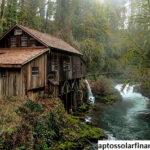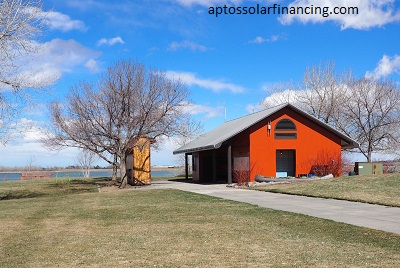The Many Advantages of a Pole Barn Structure:
When it comes to versatile and cost-effective building solutions, the pole barn is a tried-and-true option that has stood the test of time. Pole barns were originally intended as a low-cost storage solution for farmers’ equipment and animals. Nonetheless, they have evolved into a versatile building type with numerous benefits for a variety of purposes. In this essay, we’ll look into the many advantages of pole barns, such as their affordability, versatility, durability, and energy efficiency.
Cost-Effective Construction:
One of the major benefits of a pole barn is its affordability. These constructions are usually less expensive to construct than regular brick or concrete buildings. The fundamental cause of this cost savings is the construction method itself. Pole barns are built with little materials, relying on strong wooden posts (poles) driven deep into the ground for stability. This basic construction method lowers both labor and material expenses.
Versatility:
Pole barns are extremely adaptable, serving a variety of uses. They are frequently used as agricultural structures to store hay, equipment, and cattle. However, their versatility goes far beyond farming. Pole can serve as workshops, garages, storage sheds, retail facilities, and even residential residences. Their open floor plans and adjustable designs make them suited for almost any use, allowing homeowners to use them as their needs change.
Quick Construction:
Pole barns take less time to build than conventional ones. Because the construction procedure is simpler and uses fewer resources, the time it takes to build a pole is greatly decreased. This means minimal disruption to your home and quicker access to your new building. It is an efficient solution for immediate demands such as animal shelter or equipment storage.

Durability:
Pole barns are renowned for their durability. The wooden posts used in its construction are frequently pressure-treated to resist rotting and insect infestation. Furthermore, the roof and siding materials, which are often made of steel, are designed to withstand the elements while requiring little maintenance. When properly maintained, a pole barn can survive for decades, making it a wise long-term investment.
Energy Efficiency:
Modern can be built to be energy efficient. With proper insulation and ventilation systems, these structures can sustain acceptable internal temperatures all year. Whether you use it as a workshop, office, or home, you may save money on heating and cooling, making it a more environmentally responsible option.
Customization Options:
Pole barns provide numerous modification choices to meet your specific requirements and tastes. You can choose the size, layout, and design characteristics that are most appropriate for your intended usage. Furthermore, can be customized to match the look of your land, with a variety of siding and roofing options available.
Minimal Foundation Requirements:
Pole barns, unlike regular buildings, require very little foundation construction. The deep-set poles offer the required solidity, eliminating the need for substantial concrete or masonry construction. It reduces construction expenses while simultaneously minimizing environmental impact.
Conclusion:
Pole barns continue to gain favor due to their low cost, adaptability, durability, and energy efficiency. can satisfy your demands as a farmer searching for efficient storage solutions, a homeowner in need of a new garage or workshop, or a company owner looking for a low-cost retail space. Their straightforward construction method and long-lasting characteristics make them an excellent choice for anyone wishing to invest in a diverse and trustworthy building structure. Consider the advantages of a for your next construction project, and you may discover that it is the ideal answer.
What to Know Before Building a Pole Barn House:
Pole barn dwellings use poles for post-frame construction rather than internal walls. These poles are secured to the ground or concrete for a solid hold. The poles support the upper floor. Most homes in Utah are built on poles because they are inexpensive and provide the easiest way to appreciate the scenery. You can have houses built by expert builders. Many homeowners use these constructions for several purposes, including workshops, boat storage spaces, business warehouses, retail storefronts, storing farm equipment, and residential use.
Here’s a quick look at the advantages of having a pole barn in Utah.
1. They do not take long to construct.
2. These pole buildings serve numerous purposes.
3. They are substantially cheaper than concrete bars.
4. Post-frame construction is energy efficient because it provides sufficient insulation by heating or cooling the region properly.
5. It has a cheaper foundation cost as compared to concrete foundations.
Let us now look at the aspects you should consider before creating a house.

5 Things to Consider Before Building a Pole Barn House:
1. Plan Your Budget:
The first thing you must consider before deciding to build a pole barn. You must identify the ideal loan lending financial institution that offers loans for houses. When deciding on a bank, consider the loan-to-value ratio. Aside from that, prepare for the loan review process, which you must complete.
2. Look for the Best Designs:
Barn homes are no longer the rectangular boxes we’re used to seeing. You can now get them tailored based on the structural area of your home. You can have overhangs, insulated foundations, porches, cupolas, and so on. Instead of standard asphalt or shingles, homeowners can have siding, metal roofs, wall panels, and other options installed.
3. Consider Any Additional Expenses:
Most pole barn houses incur additional expenses. For example, not every bank will grant a mortgage, insulation expenses will be higher, post frames may cost more than the initial structure, maintenance will be more expensive, and so on. These are some of the additional costs that might be incurred while developing pole barn homes.
4. Determine the Correct Size:
Plan for the appropriate size of the pole barn, as it can be customized based on the property you have purchased. The suitable size will avoid the issue of building the pole barn home too large or too tiny. You must assess everything, from your parking space to the workshop you intend to have in your pole barn home. Asking the adviser for advice can be beneficial.
5. Hire a Licensed Builder:
A pole barn house is an investment, so select a builder with a good reputation in the community and a professional team. Don’t be deceived by low prices or construction costs; some builders will breach national building safety standards.










